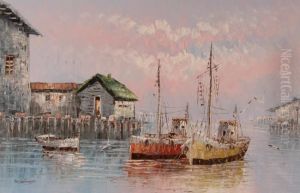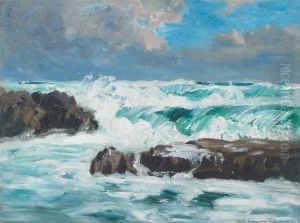Francis William Doyle-Jones Paintings
Francis William Doyle-Jones was an English sculptor and medallist who contributed to British art in the late 19th and early 20th centuries. Born in 1873, Doyle-Jones was educated at the Lambeth School of Art and the Royal Academy Schools. His education in these institutions allowed him to refine his skills and foster a deep understanding of classical sculpture, which influenced his later work.
Doyle-Jones's career was marked by a range of works, from portrait busts to imaginative sculpture. He also designed medals, such as those commemorating the coronation of King George V and Queen Mary. His style blended traditional approaches with some of the softer elements of Art Nouveau, which was popular during his active years. Despite not being a leading figure in the pantheon of art history, Doyle-Jones's contributions were appreciated in the context of public memorials and decorative art of his time.
Throughout his life, Doyle-Jones exhibited his work at the Royal Academy and other venues, and he received several commissions for public monuments. One of his notable works is the 'Dover Marine War Memorial', which was unveiled in 1924 and pays tribute to the marine servicemen who died during the First World War. His works are characterized by a sense of dignity and classical composure, which was typical of the era's public monuments.
Francis William Doyle-Jones's career was not limited to sculpture. His versatility also led him to engage in teaching, passing on his skills and knowledge to future generations of artists. He died in 1938, leaving behind a modest but significant body of work that reflects the artistic and cultural values of his time.

